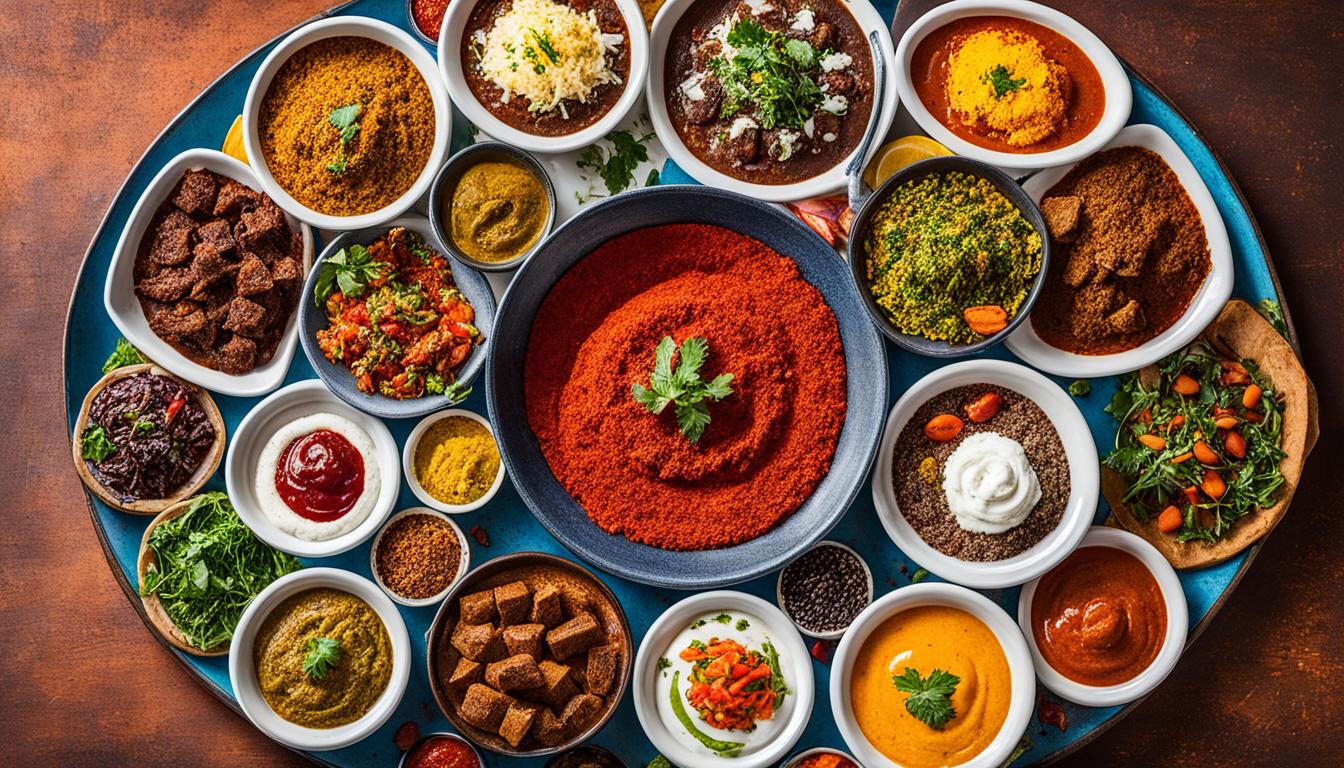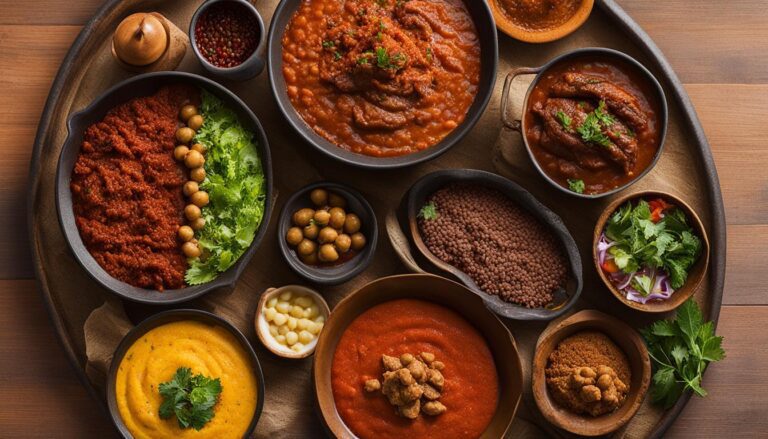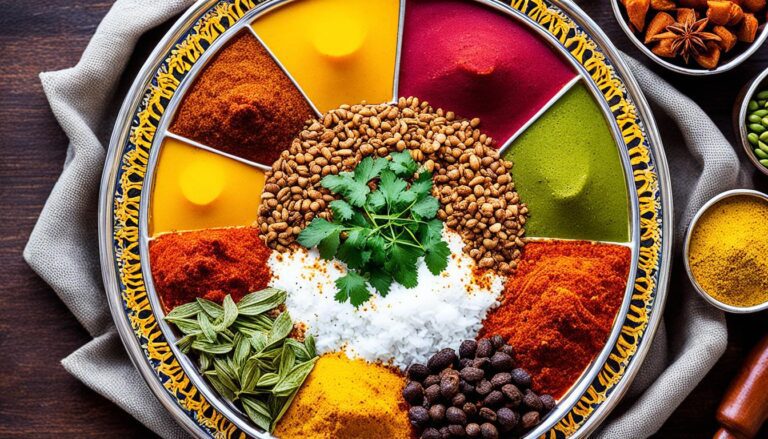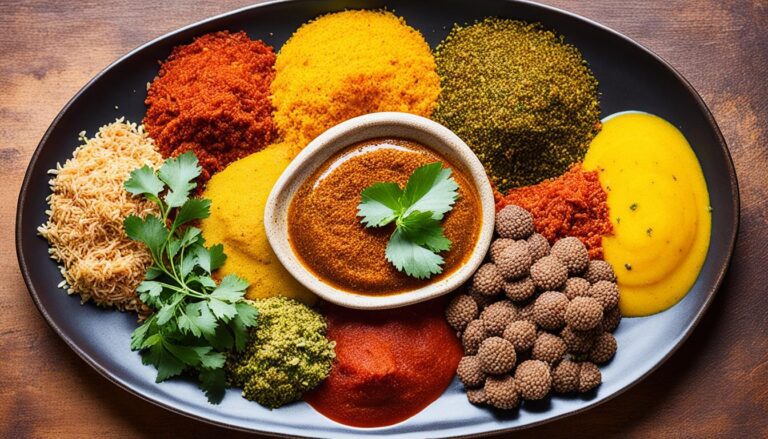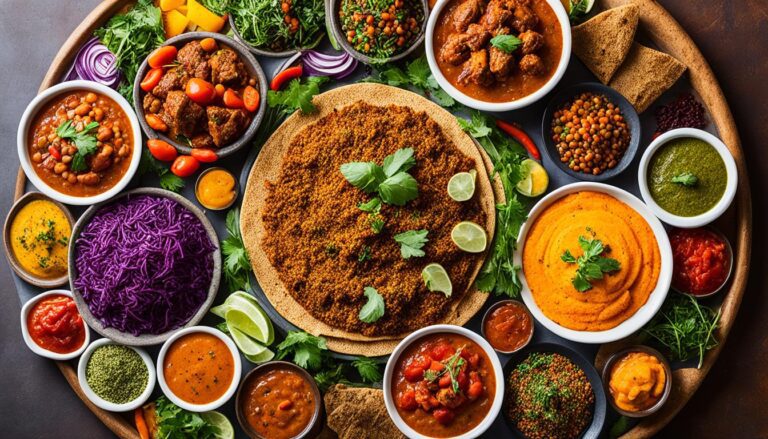Is Ethiopian Food Nice?
When it comes to diverse and flavorful cuisines, Ethiopian food stands out as a hidden gem. But is Ethiopian food really as nice as people claim it to be? Join us on a culinary adventure as we unravel the mysteries of this rich and vibrant cuisine, and discover what makes it so irresistibly delicious.
From the fusion of flavors to the unique dining traditions, Ethiopian food offers a truly immersive experience that tantalizes the taste buds and leaves you craving for more. But what exactly sets Ethiopian cuisine apart from the rest? What makes it so special?
You may have heard of injera, the sourdough flatbread that serves as the base for most Ethiopian meals. But did you know that Ethiopian food goes beyond just injera? It is a beautiful medley of spices, herbs, and traditional ingredients that come together to create a harmonious blend of flavors.
In this article, we will take you on a journey through the staple dishes, the intricate spice profiles, and the vegetarian and vegan delights of Ethiopian cuisine. We will also explore the unique dining traditions that make Ethiopian food not only a feast for the senses but also a testament to the cultural richness of this ancient land.
So, is Ethiopian food nice? Prepare to be surprised as we dive deep into the delectable world of Ethiopian cuisine, where every bite is an explosion of flavors and a celebration of food.
Key Takeaways:
- Ethiopian food is known for its fusion of flavors and unique culinary traditions.
- Staple dishes like injera and wats are at the heart of Ethiopian cuisine.
- The spice and flavor profiles in Ethiopian dishes are complex and aromatic.
- There is a wide variety of vegetarian and vegan options in Ethiopian cuisine.
- Enjoying Ethiopian food is not just about eating; it’s a cultural experience.
Ethiopian Cuisine: A Fusion of Flavors
Ethiopian cuisine is a culinary journey filled with a harmonious fusion of flavors. Drawing upon a rich culinary heritage, Ethiopian dishes combine a variety of spices, herbs, and ingredients to create a truly unique and delightful taste profile.
At the heart of Ethiopian cuisine is the art of blending flavors. Each dish showcases a careful balance of spices, resulting in a symphony of tastes that awaken the senses. From warm, earthy flavors to vibrant and fiery notes, every bite is an exploration of diverse and complex flavors.
The fusion of flavors in Ethiopian cuisine is a reflection of the country’s rich history and cultural diversity. The influence of ancient trade routes and neighboring regions has shaped the culinary traditions of Ethiopia, bringing together an array of ingredients and cooking techniques.
One iconic example of this fusion is the use of berbere, a spice blend that embodies the flavors of Ethiopia. Made from a mix of dried chili peppers, garlic, ginger, and various other spices, berbere lends dishes a bold, smoky, and slightly sweet taste.
Another key component of Ethiopian cuisine is the use of injera, a sourdough flatbread that acts as both a staple food and a utensil. Made from fermented teff flour, injera has a tangy flavor and spongy texture, complementing the robust flavors of Ethiopian stews and dishes.
Whether you’re savoring spicy wats, enjoying aromatic vegetable dishes, or indulging in savory meat options, Ethiopian cuisine promises an unforgettable gastronomic experience. The fusion of flavors creates a delightful tapestry of taste, inviting you to explore and savor each unique dish.
Staple Dishes: The Heart of Ethiopian Food
Ethiopian cuisine is a celebration of communal dining, where staple dishes take center stage. These traditional favorites not only satisfy our taste buds but also bring people together, reflecting the warmth and generosity of Ethiopian culture.
One of the most iconic staple dishes in Ethiopian cuisine is injera, a sourdough flatbread with a slightly tangy taste and a spongy texture. Made from fermented teff flour, injera serves as the foundation for many Ethiopian meals. Its versatility allows it to be paired with various meat, vegetable, and legume dishes, creating a harmonious blend of flavors.
Another beloved staple dish is wats, which are rich and spicy stews that showcase the depth and complexity of Ethiopian flavors. Wats are typically served with injera, and their fragrant aromas and robust flavors make them immensely satisfying. From doro wat (chicken stew) to misir wat (red lentil stew), these dishes highlight the diversity of Ethiopian cuisine.
For Ethiopians, staple dishes like injera and wats are not only nourishing but also symbolic. They represent unity, as they are served on a large communal plate where everyone gathers around to share a meal. Engaging in this communal dining experience fosters a sense of togetherness, fostering deep connections and building lasting relationships.
So, the next time you indulge in Ethiopian food, remember that you are not just savoring delicious flavors but also immersing yourself in a culinary tradition that celebrates community and togetherness.
Spice and Flavor Profile: Exploring Ethiopian Seasonings
Ethiopian cuisine is renowned for its complex and aromatic spices. The spice profile of Ethiopian dishes is a true delight for the senses. From the fiery berbere spice blend to the hot chili powder known as mitmita, Ethiopian seasonings bring a depth and complexity to the table that is truly exceptional.
One of the key components of Ethiopian cuisine is the berbere spice blend. Made from a combination of dried chili peppers, garlic, ginger, coriander, and various other spices, berbere adds a distinctive heat and bold flavor to dishes. Its vibrant red color and rich aroma are a testament to the intense flavors it imparts.
Another popular spice used in Ethiopian cuisine is mitmita. This hot chili powder is made from a blend of roasted chili peppers, garlic, ginger, cardamom, and other spices. Mitmita adds a fiery kick to dishes, creating a tantalizing flavor experience that is sure to awaken your taste buds.
These unique spice blends are not only used for their flavor-enhancing qualities but also for their cultural significance. Ethiopian seasonings are an essential part of the culinary heritage, representing the rich and diverse flavors of the country.
To truly appreciate the spice and flavor profile of Ethiopian cuisine, it is best experienced through traditional dishes such as key wat (spicy beef stew), doro wat (spicy chicken stew), or alicha wat (mild vegetable stew). These dishes showcase the complexity of the seasonings and highlight the harmonious blend of flavors that Ethiopian cuisine is known for.
So, if you’re a fan of bold and aromatic spices, Ethiopian cuisine is sure to satisfy your cravings. Let the spice profile and flavor profile of Ethiopian seasonings take your taste buds on a culinary adventure like no other.

Discover the richness and warmth of Ethiopian cuisine with its unique spice blends and flavor combinations. Join us as we explore the culinary wonders of Ethiopian seasonings.
Vegetarian and Vegan Delights: Ethiopian Cuisine for Everyone
Ethiopian cuisine is not only a delight for meat lovers but also offers a bountiful selection of mouthwatering vegetarian and vegan options. Whether you follow a plant-based diet or have dietary restrictions, Ethiopian food has something to satisfy your taste buds.
Vegetarians and vegans can indulge in a variety of flavorful dishes that showcase the diverse culinary traditions of Ethiopia. From hearty lentil stews to vibrant vegetable curries, the vegetarian and vegan delights of Ethiopian cuisine bring a burst of colors, textures, and aromatic flavors to the table.
One popular vegetarian dish is Shiro, a thick and creamy stew made from ground chickpeas or lentils, simmered in a blend of fragrant spices. It is often served with injera, a tangy sourdough flatbread that serves as both a plate and an edible utensil. The combination of the rich shiro and the spongy injera creates a harmonious balance of flavors that is simply irresistible.
Misir Wot, another vegetarian delight, is a spicy red lentil stew infused with aromatic spices. The slow-cooked lentils are tender and flavorful, making it a comforting and satisfying dish. The vibrant red hue and the aromatic spices create an enticing visual and olfactory experience.
Atakilt Wat is a flavorful vegan dish that combines garden-fresh vegetables like cabbage, carrots, and potatoes with a zesty blend of spices. This hearty stew is packed with nutrients and offers a burst of natural flavors that will leave you craving more.
For those seeking a unique and wholesome dining experience, Ethiopian cuisine provides a diverse range of vegetarian and vegan options that cater to different taste preferences. From the flavorful spices to the communal dining tradition, Ethiopian food offers a gastronomic journey that is both satisfying and fulfilling.
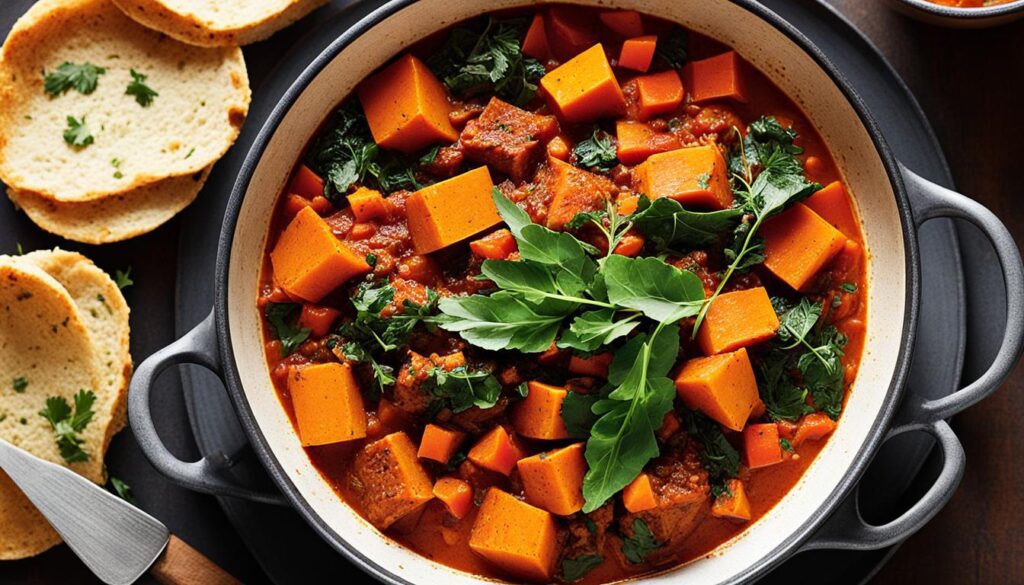
Engage your taste buds and indulge in the vegetarian and vegan delights of Ethiopian cuisine!
Unique Dining Experience: Ethiopian Food Traditions
Ethiopian dining is more than just eating a meal; it is an immersive experience. The dining traditions in Ethiopian culture play a significant role in enhancing the overall dining experience. Let us explore some of these unique traditions that make Ethiopian food not only delicious but also culturally significant.
Eating with Hands
In Ethiopian food traditions, it is customary to eat with your hands. The absence of utensils creates a deeper connection with the food and allows you to fully engage your senses. By using injera, a traditional sourdough flatbread, as a utensil, you can savor the various dishes and experience the textures and flavors more intimately. The practice of eating with hands goes beyond convenience—it embodies a sense of togetherness and closeness.
The Concept of Gursha
Another fascinating tradition in Ethiopian dining is the concept of gursha. Gursha involves feeding others as an act of love, respect, and hospitality. It is a beautiful expression of generosity and strengthening social bonds. Sharing a gursha is a symbol of trust and affection, and it allows you to connect with your dining companions on a deeper level. The act of feeding someone else with your hand demonstrates care and fosters a sense of community.
Embark on an extraordinary dining experience as you indulge in the flavors of Ethiopian cuisine and immerse yourself in their unique food traditions. From the tactile pleasure of eating with your hands to the warmth and intimacy of sharing a gursha, every aspect of Ethiopian dining will leave a lasting impression. Discover the culinary delights and cultural significance that make Ethiopian food traditions truly one-of-a-kind.
Next: Conclusion
Conclusion
In conclusion, Ethiopian food offers a delightful culinary adventure that is sure to tantalize your taste buds. With its fusion of flavors, Ethiopian cuisine takes you on a gastronomic journey like no other.
Whether you are a meat lover or a vegetarian, Ethiopian cuisine has something to offer everyone. The rich traditions and communal dining experience add an extra layer of warmth and authenticity to the food.
From the staple dishes like injera and wats to the complex and aromatic spice profiles, Ethiopian food captures the essence of a vibrant and diverse culture. So why not embark on a culinary adventure and experience the richness of Ethiopian food for yourself? You won’t be disappointed!

